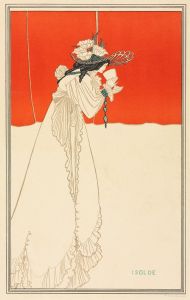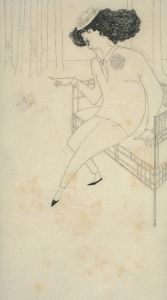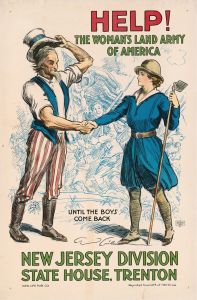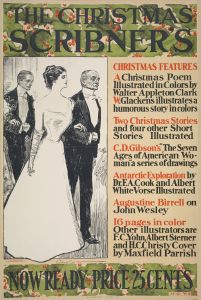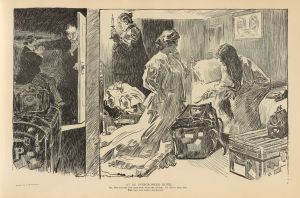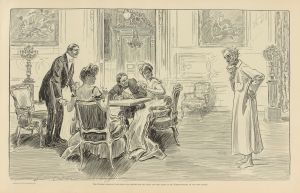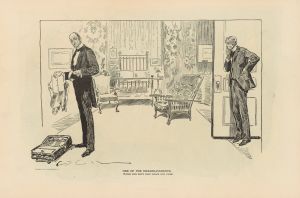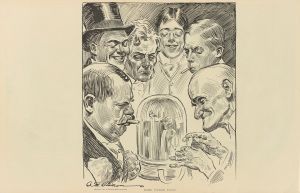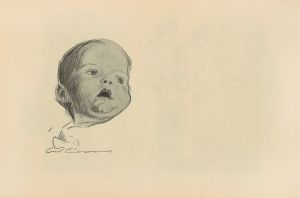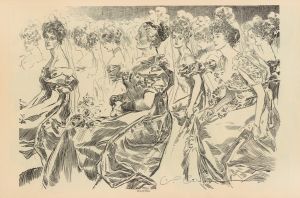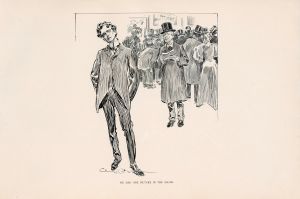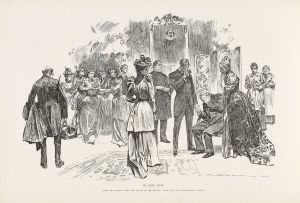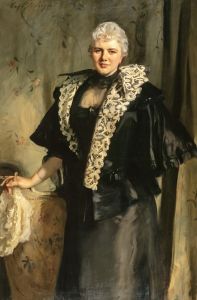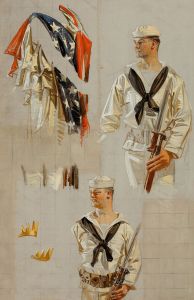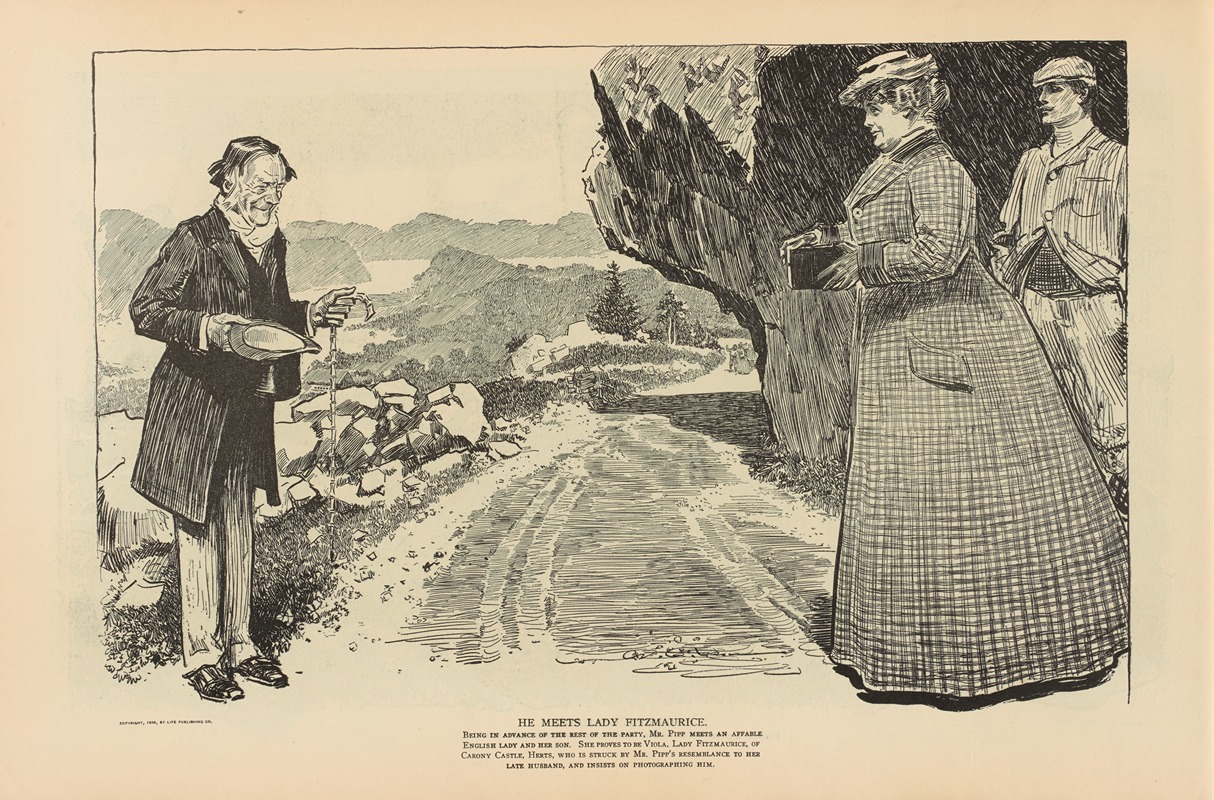
He meets Lady Fitzmaurice
A hand-painted replica of Charles Dana Gibson’s masterpiece He meets Lady Fitzmaurice, meticulously crafted by professional artists to capture the true essence of the original. Each piece is created with museum-quality canvas and rare mineral pigments, carefully painted by experienced artists with delicate brushstrokes and rich, layered colors to perfectly recreate the texture of the original artwork. Unlike machine-printed reproductions, this hand-painted version brings the painting to life, infused with the artist’s emotions and skill in every stroke. Whether for personal collection or home decoration, it instantly elevates the artistic atmosphere of any space.
Charles Dana Gibson was an influential American illustrator best known for his creation of the "Gibson Girl," an iconic representation of the American woman at the turn of the 20th century. His illustrations were widely published in magazines such as Life, Scribner's, and Harper's, and they played a significant role in shaping the visual culture of the era.
"He meets Lady Fitzmaurice" is one of Gibson's works, although specific details about this particular illustration are not extensively documented. Gibson's illustrations often depicted scenes of high society, romance, and social interactions, characterized by their detailed line work and expressive characters. The "Gibson Girl" was often featured in these settings, embodying the idealized beauty, independence, and confidence of women during that period.
Gibson's work, including "He meets Lady Fitzmaurice," typically reflects the social dynamics and gender roles of the late 19th and early 20th centuries. His illustrations often portrayed men and women in various social situations, capturing the nuances of courtship, fashion, and societal expectations. The characters in his drawings were usually elegantly dressed, reflecting the fashion trends of the time, and were set against backgrounds that suggested affluence and sophistication.
The "Gibson Girl" became a cultural phenomenon, influencing fashion and the perception of women's roles in society. She was seen as both a symbol of femininity and a representation of the changing status of women, as they began to seek more independence and opportunities outside the traditional domestic sphere. Gibson's illustrations, including "He meets Lady Fitzmaurice," contributed to this evolving narrative by presenting women as active participants in social life, rather than passive observers.
While specific information about the scene depicted in "He meets Lady Fitzmaurice" is limited, it can be inferred that the illustration likely features a social interaction between a male character and Lady Fitzmaurice, possibly set in a high-society environment. The artwork would have been consistent with Gibson's style, emphasizing elegance, wit, and the subtleties of human relationships.
Gibson's legacy as an illustrator is significant, as his work not only captured the essence of his time but also influenced future generations of artists and illustrators. His ability to convey complex social themes through simple yet powerful imagery remains a testament to his skill and insight as an artist.
In summary, while detailed information about "He meets Lady Fitzmaurice" is scarce, it is representative of Charles Dana Gibson's broader body of work, which played a crucial role in defining the visual and cultural landscape of early 20th-century America. His illustrations continue to be celebrated for their artistic merit and their impact on the portrayal of gender and society.





